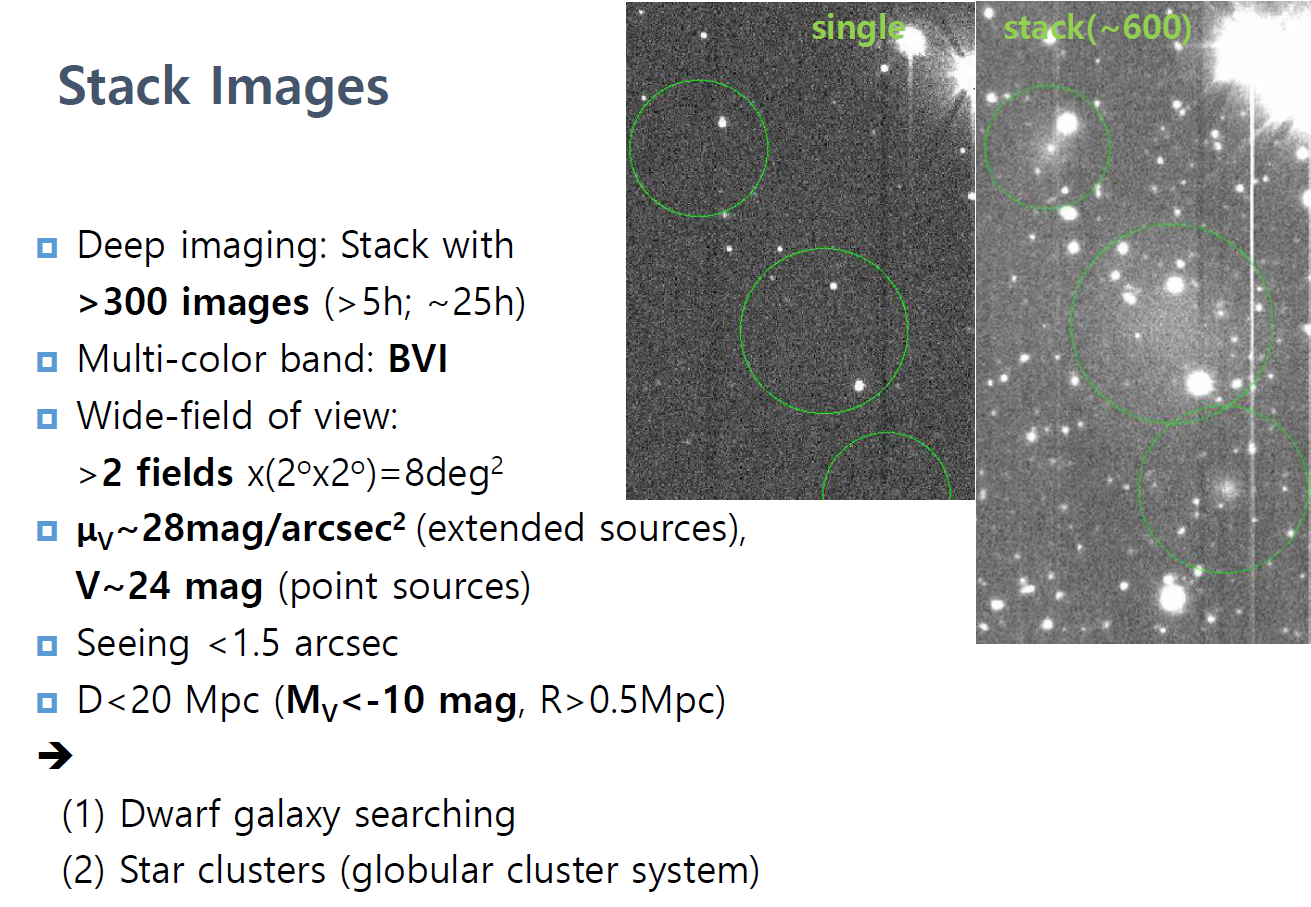Introduction to the data
In this web, we introduce the faint dwarf galaxy survey of nearby groups using the deep-wide images from the Korea Microlensing Telescope Network (KMTNet).
We are carrying out a systematic study of dwarf galaxies in nearby galaxy groups using data from the KMTNet Supernova Program (KSP). The KSP is a program to search for supernovae and optical transients using three identical 1.6m telescopes with wide-field CCD camera, 2deg by 2deg, located at the Cerro Tololo Inter-American Observatory (CTIO, Chile), the South African Astronomical Observatory (SAAO, South Africa), and the Siding Spring Observatory (SSO, Australia). When several hundred KSP images in each field are stacked, the program provides deep BVI images reaching a sensitivity of about 28 mag/arcsec2.
The KSP dwarf galaxy survey investigates the properties of group dwarf galaxies down to a total absolute magnitude M_V = -10 mag using multiband (BVI) imaging. Our survey area covers non-bulge seasons, 22h < R.A. < 24h and 0h < R.A. < 14h for Decl. < 0deg. Our target fields usually have a main galaxy that is brighter than M_V = -20 mag and relatively nearby, D < 20 Mpc. Normally, we observe two fields for each targeted group, and this results in coverage where the maximum projected radial distance from the group main galaxy is roughly > 0.5Mpc.
Our aims are to (1) identify new faint dwarf galaxies, (2) identify any cases with unusual structures (e.g., nucleated dwarf galaxies, UDGs, star clusters), and (3) uncover how group properties relate to the properties of the satellite population, such as the spatial distribution and LF. We already reported our discovery and analysis of ∼100 dwarf galaxy candidates toward NGC 2784 group and NGC 3585 group (Park et al. 2017,2019).
The eventual complete survey from the KSP data will provide homogeneous results that can be compared for >30 nearby groups up to at least 2023.
